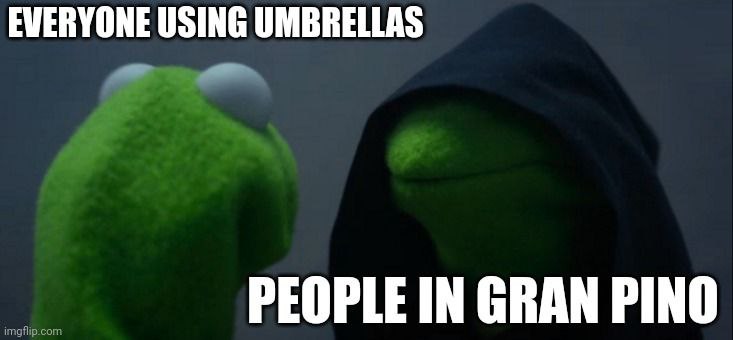To the Solvay and back: CliMATEs on (e)action!
- Gian Giovani
- May 31, 2023
- 5 min read

First part: What does climate justice look like to you?
(Dis)assemble climate justice and including everyone: The A4 sheet of Gran Pino?
We, the participants of the "From local action to digital activism" youth exchange in Cecina (Italy), were asked to draw our own answer to the question "what is climate justice for you" on a A4 paper sheet on our first morning together in May 2023. Each participant had 10 minutes to draw their answer. The ideas were as diverse as the background of each of us: We are youth from age 16 to age 30, coming from Afghanistan, China, the Czech Republic, Germany, Iran, Italy, Norway, Pakistan, Romania, and Spain. But instead of presenting our drawings to the group, we were asked to pair up and combine our two drawings to fit onto one single A4 sheet. Hence, everyone immediately started discussing, cutting, tearing apart, and gluing together. Ten minutes later, we were once again asked to pair up with another pair to repeat the task, and so on... It got increasingly difficult to find space for everyone to be included and heard on one single sheet - comparable to how difficult it is to leave no one behind in the climate crisis in general and attempts towards climate justice in particular.


In the end, we were left with two A4 sheets packed with thoughts, experiences, and graphic representations of the different aspects that we found to be central to climate (in)justice. We had two very concrete examples of case studies from Pakistan and China, where those affected most by environmental pollution were not the ones actually generating it. We had drawings of big corporations that take too little responsibility for their harmful actions and of the more general linkages between climate injustice and imperialism, colonialism, capitalism, and discrimination. And we had many more drawings of elements that belong to achieving climate justice such as access to education and rights, protest, reparations, and redistribution of resources and money. The general consensus of the final group discussion, that a climate-just world no longer prioritizes profit over sustainability and people, was very visible in those two final A4 papers.
What can we say? We still haven't managed to agree on a final combined version of those two sheets. But we have included a picture of the final two papers and maybe someone will at some point come up with a solution. At least, this excercise successfully epitomized the complexity and plurality of issues and elements that are part of climate justice!
Second part of Climate justice education focused on the global economy and its created relationship between climate change victims and profile-based industries.

Second part: Digital activism
What is the impact of the digital world on you(th) and the environment?

What do you know about your digital footprint? With that question in mind, we started a very informative session about what is behind our (nowadays daily) digital actions. Have you ever thought of the environmental impact of sending a simple "thank you email"? Or how much CO2 emissions are the consequence of listening to music streaming from online video platforms? These, and other questions were the starting point for reflection and debate during our CliMATES Youth Exchange. We also discussed the hidden part of all the cloud data storage, and received tips on how to decrease our digital impact, such as using wifi instead of mobile data, downloading music and using less streaming, cleaning the cloud and using hardware for storage, deactivating autoplay settings on social media, etc.
Regarding digital activism, we also had a presentation by Dr. Silvia Semezin, from the University Complutense of Madrid, where we learned about the attention economy and its consequences, the paradoxes of the current digital ecosystem (that looks egalitarian yet it is hierarchical), and how data and algorithms are a new potential form of social inequality. We also discussed types of digital activism, such as Hashtag activism, clicktivism, political consumerism, data activism, and hacktivism.
If you are interested in the topic, some resources to follow up are the documentary Coded Bias and the book How to Do Nothing: Resisting the Attention Economy.
Part three: Field trip to Solvay

For more than a century, the coastal waters off Rosignano Solvay, a Tuscan town named for the company that built it, have been a dumping ground for millions of tons of milky white industrial discharge that have transformed the beaches and the seabed beyond.
Italian government agencies have warned for years that mercury, a neurotoxic heavy metal, has contaminated the sea floor — an unwelcome legacy that researchers have linked to work done years ago at a plant operated by Solvay SA.
Questions about the plant’s environmental impact are mounting as activists, a dissident. Amid the controversy, the Italian government has recently renewed Solvay’s permit to operate, a decision that sparked an outcry among opponents, but has another side to it since a huge part of the community is winning their daily bread by working at Solvay.
Here is a Podcast assembled, in collaboration with IYNF, special thanks to Gesine and Amalie from our Naturefriend family.
Part four: Design Thinking for local action
In one of the sessions, we did a design thinking methodology where we were presented with different problems in the local community around the Naturefriends house Gran Pino. We got issues such as: “Waste management” “Solvay Factory” “Sustainable transport” and “Sustainable energy”. Further the participants added ideas and interesting topics to these issues. Then they got to choose which of the topics interested them the most. Groups of two to four participants were created. Then in groups, the participants identified their strengths and shared them with their group. In the next round, they found the weaknesses or skills they were missing to execute their project. Some groups found that they were missing Italian, and got support from the Italian speaking participants in other groups.

The participants teamed up in groups and got to work. They had an afternoon to realize their projects and give a presentation of the outcome.

They were very creative and came up with very different and interesting projects. One group tackled plastic waste on the beach by doing a beach cleanup and creating a dress out of the waste and creating a video about it. Another group wanted to spotlight the horrible problem of toxic waste being dumped into the ocean by the Solvay factory. They recorded a podcast where they interviewed tourists, local people and our participants. They also did recordings during our field trip to the bleached and polluted beach next to the factory. Our third group decided to look into bike renting opportunities and visited the local bike rental place near the Naturefriends house. They talked to the owner. Their outcome was a poster with information about the bikes to future visitors of Gran Pino which will be printed and hung up at the house.
The forth and final group really went local and located maintenance issues at Gran Pino itself. They even created a workshop for the other participants to help them fix the problems. The participants managed to paint the outdoor showers, fix a bench, and close the hole and install a new mosquitonet for the kitchen door.
It was great seeing the group not only giving back to the local community, but also the Naturefriends house.
Here are some of the outcomes:
Amazing video of the Trash actress at the beach of Cecina
You can download the poster a group has done on local food waste alternatives in Italian:
A deep research article done by two of our participants was published
This project was kindly supported by:


Furthermore, we would like to thank all the beautiful souls helping to make this experience happen, by sharing knowledge, energy, and smiles.
A Special heads-up to the Granpino team, who supported us via delicious food, amazing logistic support, and a beautiful Naturefriend house structure.
A big appreciation for GIAN - Federazione amici della natura Italia, for their presence as a partner in this project, supporting GIANGIO.
Heads up to Gesine, Amalie, Sahar, and Noa, who helped us write this article.
your teamers,
Pari, Sina, Sara and Zaineb

































































Comments